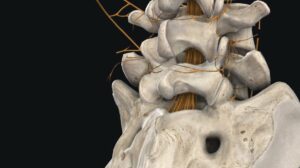NEW YORK (Reuters Health) – Transesophageal endoscopic surgery of the mediastinum in pigs carries a substantial risk of inadvertent pneumothorax, German researchers report.
The procedure had no cardiopulmonary effects “as long as no pneumothorax was provoked,” lead author Dr. Stefan von Delius from Technische Universitat Muenchen told Reuters Health by email.
In their March 4th online report in Endoscopy, Dr. von Delius and his colleagues point out that unlike endoscopic procedures in the peritoneal cavity, where the abdominal wall is very compliant, the mediastinum is surrounded by “rather rigid structures” and “only a little insufflation might…lead to serious physiological consequences.”
In procedures on eight female pigs, the researchers successfully gained transesophageal access to the mediastinum.
Three animals sustained small tears in the parietal pleura during mediastinoscopy, however, and each developed a left-sided pneumothorax as a result. One animal died from a tension pneumothorax that wasn’t recognized in time.
In the other two with pleural tears, pneumothorax produced hemodynamic instability, with hypotension, major decreases in the cardiac index, marked increases in peak inspiratory pressures, and a fall in pH and pO2.
The pigs that did not develop pneumothorax had no relevant changes in heart rate, mean arterial pressure, or peak inspiratory pressures, according to the report. Even these animals had modest but significant transient decreases in their cardiac index, however, with a maximum reduction of 5% at 6 minutes after the procedure began.
“Overall,” the investigators conclude, “close monitoring of peak inspiratory pressure, heart rate, and blood pressure in mechanically ventilated subjects undergoing transesophageal mediastinoscopy seems mandatory for early detection of an accidental pneumothorax.”
Dr. von Delius said that before the procedure can be tested in humans, additional studies need to address “further safety issues such as secure closure of the incisional sites for transluminal access, development of specialized endoscopes and accessories for transluminal surgery, and infection issues.”
His group plans to evaluate “carbon dioxide as insufflation gas for natural orifice transluminal endoscopic surgery” and “different insufflation pressure levels.”
Reference:
Endoscopy 2010.




